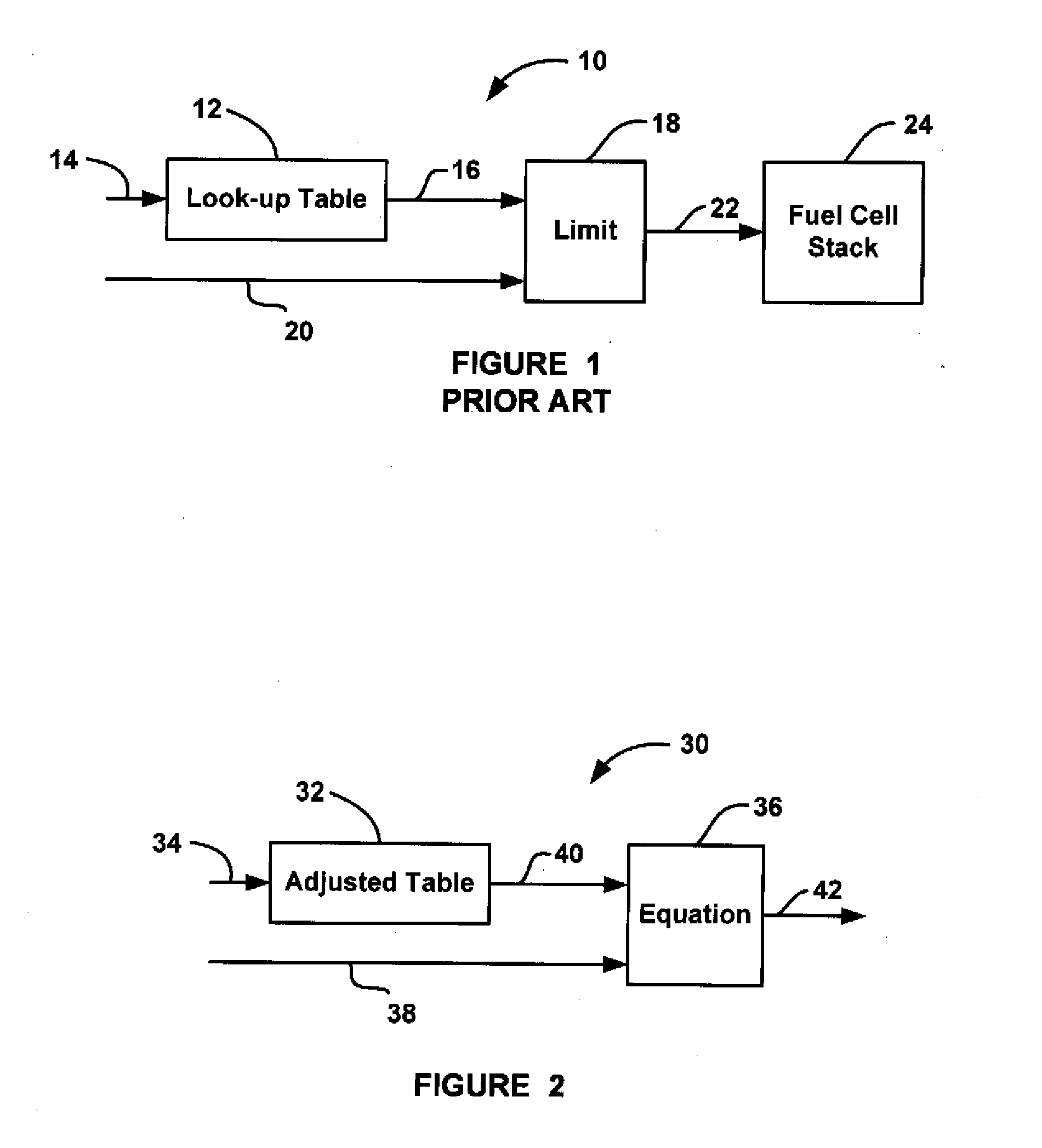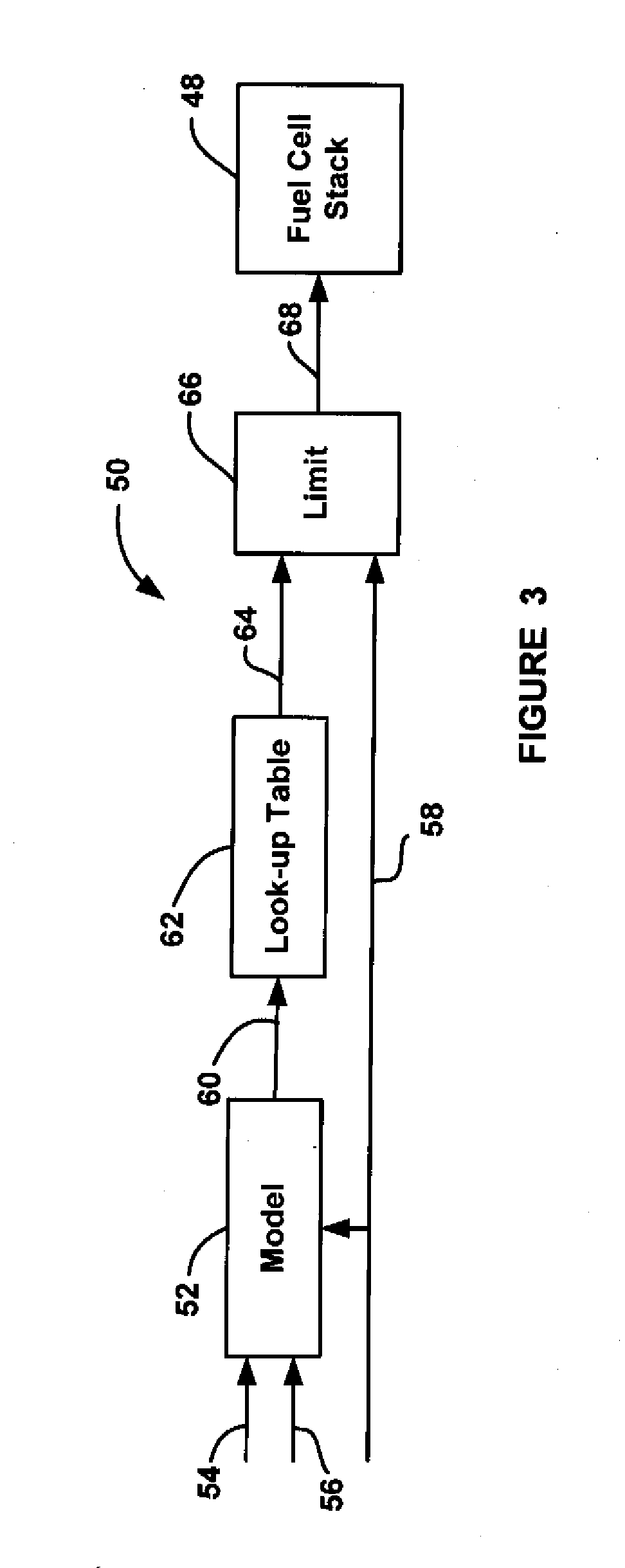Method to improve fuel cell system performance using cell voltage prediction of fuel cell stack
a fuel cell and voltage prediction technology, applied in chemical methods analysis, electrochemical generators, instruments, etc., can solve the problems of difficult to define the relationship between the voltage and the current of the stack, the relationship between the current and the voltage of the stack is typically difficult to define, and the cost of manufacturing methods is relatively high
- Summary
- Abstract
- Description
- Claims
- Application Information
AI Technical Summary
Benefits of technology
Problems solved by technology
Method used
Image
Examples
Embodiment Construction
[0017]The following discussion of the embodiments of the invention directed to a system and method for determining the maximum allowed stack current limit rate for a fuel cell stack that uses an estimated cell voltage is merely exemplary in nature, and is in no way intended to limit the invention or its applications or uses.
[0018]FIG. 1 is a schematic block diagram of a current set-point system 10 of the type known in the art and discussed above. The system 10 includes a look-up table 12 that receives temperature and relative humidity input signals on line 14. Based on the temperature and relative humidity input signals, the look-up table 12 provides a current rate limit value R on line 16 that is sent to a limit processor 18. The limit processor 18 also receives a current request value Ireq on line 20 that identifies a current set-point value Isp to be provided to a fuel cell stack 24, typically from a vehicle driver request, on line 22. The limit processor 18 provides the current ...
PUM
 Login to View More
Login to View More Abstract
Description
Claims
Application Information
 Login to View More
Login to View More - R&D
- Intellectual Property
- Life Sciences
- Materials
- Tech Scout
- Unparalleled Data Quality
- Higher Quality Content
- 60% Fewer Hallucinations
Browse by: Latest US Patents, China's latest patents, Technical Efficacy Thesaurus, Application Domain, Technology Topic, Popular Technical Reports.
© 2025 PatSnap. All rights reserved.Legal|Privacy policy|Modern Slavery Act Transparency Statement|Sitemap|About US| Contact US: help@patsnap.com



